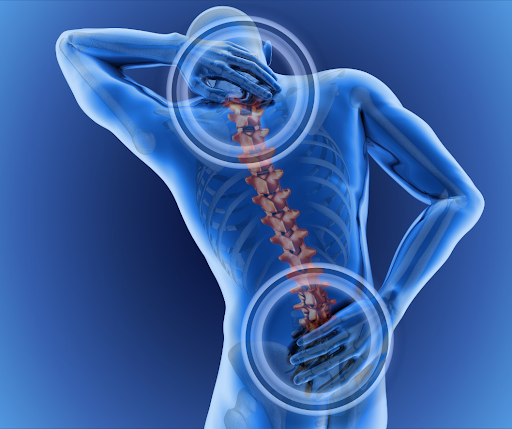Does Gabapentin Help with Sciatica?
Sciatica can cause sharp pain that shoots down your leg, making simple tasks hard. Many people wonder if gabapentin, a common medication, can ease this pain. This article [...]
Read More
Medically reviewed by Abhijit Bhattacharyya | MD, PhD, MBA, Tufts University School of Medicine - Miami, Florida on June 22nd, 2025.
Back pain is a common ailment that affects millions of people worldwide. From the occasional twinge to chronic discomfort, back pain can significantly impact daily life. When faced with this issue, many individuals wonder whether urgent care facilities can provide the necessary assistance. This article explores the role of urgent care in managing back pain, what to expect during a visit, and alternative options like telehealth services.
 Understanding Back Pain
Understanding Back PainBefore diving into the specifics of urgent care, it's essential to understand the nature of back pain. It can stem from various causes, including muscle strain, herniated discs, arthritis, or even underlying medical conditions. Identifying the root cause is crucial for effective treatment. Additionally, lifestyle factors such as poor posture, lack of exercise, and obesity can exacerbate back pain, making it vital to consider these elements when assessing one’s condition. Regular physical activity and maintaining a healthy weight can play a significant role in preventing back issues and promoting overall spinal health.
Back pain can be classified into two main categories: acute and chronic. Acute back pain typically arises suddenly and can last for a few days to a few weeks. It often results from injuries, such as lifting heavy objects or sudden movements. On the other hand, chronic back pain persists for three months or longer and may require more extensive treatment. Chronic pain can be particularly challenging, as it may not only affect physical health but also lead to emotional distress, impacting one’s quality of life. Understanding the duration and nature of the pain can assist healthcare providers in tailoring appropriate treatment plans.
Symptoms of back pain can vary widely. Some common indicators include:
Localized pain in the lower or upper back
Stiffness or reduced flexibility
Pain that radiates down the legs
Muscle spasms
Difficulty standing up straight
Understanding these symptoms can help individuals determine whether they need immediate medical attention. In addition to these physical symptoms, back pain can also manifest as fatigue or difficulty sleeping, which can further complicate recovery. It’s important to recognize that emotional factors, such as stress and anxiety, can also contribute to the perception of pain, making a holistic approach to treatment essential. Seeking professional advice early can lead to better management strategies and prevent the pain from becoming a chronic issue.
Urgent care facilities can be a valuable resource for those experiencing back pain, particularly when symptoms are severe or sudden. However, knowing when to visit an urgent care center is crucial.
While many cases of back pain can be managed at home, certain signs indicate that urgent care may be necessary. These include:
Severe pain that does not improve with rest or over-the-counter pain relievers
Loss of bladder or bowel control
Numbness or tingling in the legs
Signs of infection, such as fever or chills
If any of these symptoms are present, it is advisable to seek medical attention promptly. Ignoring these signs could lead to more serious complications. For instance, loss of bladder or bowel control may indicate a serious condition known as cauda equina syndrome, which requires immediate surgical intervention to prevent permanent damage. Similarly, persistent numbness or tingling can signify nerve compression or injury, which, if left untreated, may lead to chronic pain or mobility issues.
Urgent care facilities are equipped to handle a variety of medical issues, including back pain. They can provide immediate assessments, diagnostic tests, and treatment options. Here are some ways urgent care can assist:
Assessment: Healthcare professionals can evaluate the severity of the pain and determine if further tests, such as X-rays or MRIs, are necessary.
Treatment: Depending on the diagnosis, urgent care can offer treatments such as pain management, physical therapy recommendations, or referrals to specialists.
Follow-up Care: If the back pain is part of a more extensive issue, urgent care can facilitate referrals to appropriate specialists for ongoing care.
In addition to these services, urgent care centers often provide access to a range of pain relief options, including injections or medications that can help alleviate discomfort in the short term. Many facilities also have physical therapists on staff who can begin rehabilitation exercises immediately, promoting faster recovery. Furthermore, urgent care centers typically have extended hours and can accommodate walk-in patients, making them a convenient option for those who may not be able to wait for an appointment with their primary care physician.
Visiting an urgent care facility for back pain can be a straightforward process. Understanding what to expect can help alleviate any anxiety associated with the visit.
Upon arrival, patients will typically fill out a form detailing their medical history and current symptoms. This information is crucial for healthcare providers to understand the patient's condition better. It’s important to be as thorough as possible when filling out this form, as it can significantly influence the diagnosis and treatment plan. If there are any previous injuries, surgeries, or chronic conditions, mentioning these can provide valuable context for the healthcare team.
After the initial consultation, a healthcare professional will conduct a physical examination. They may ask about the onset of the pain, its location, and any aggravating factors. This dialogue is essential, as it helps the provider gauge the severity of the condition and how it impacts daily activities. Based on this assessment, they may recommend diagnostic tests, such as X-rays or MRIs, to determine the underlying cause. These tests can help rule out serious issues like fractures or herniated discs, ensuring that the treatment plan is tailored to the specific needs of the patient.
Once a diagnosis is made, the healthcare provider will discuss treatment options. This may include:
Prescription medications for pain relief
Recommendations for physical therapy
Advice on home care, including rest and ice application
Patients will leave with a clear understanding of their condition and a plan for recovery. Additionally, the provider may suggest lifestyle modifications to prevent future occurrences of back pain. This could involve ergonomic adjustments at work, exercises to strengthen core muscles, or tips on maintaining proper posture. Understanding these preventive measures can empower patients to take an active role in their health and minimize the risk of recurring issues.
While urgent care can be beneficial for many back pain cases, it is not without limitations. Understanding these can help patients make informed decisions about their healthcare.
Urgent care facilities are designed for immediate, non-life-threatening issues. However, complex cases involving chronic pain or underlying medical conditions may require specialized care. Patients experiencing persistent back pain should consider consulting with their primary care physician or a specialist. Conditions such as herniated discs, spinal stenosis, or degenerative disc disease often necessitate a comprehensive treatment plan that includes physical therapy, medication management, or even surgical intervention. These cases are typically beyond the scope of what urgent care can effectively address, as they require a thorough understanding of the patient's medical history and ongoing monitoring.
Urgent care centers may not have access to advanced imaging technologies, such as MRIs or CT scans, which are often necessary for diagnosing certain back conditions. If a more in-depth evaluation is needed, patients may be referred to a hospital or specialist. This can lead to delays in receiving appropriate treatment, as patients may need to navigate multiple appointments and referrals before obtaining a clear diagnosis. Furthermore, urgent care providers may rely on a physical examination and basic diagnostic tests, which can sometimes overlook subtle but significant issues that advanced imaging could reveal. This limitation underscores the importance of follow-up care and the need for patients to advocate for their health by seeking further evaluation when necessary.
For those who may not need immediate in-person care, telehealth services have emerged as a convenient alternative. Companies like Doctronic offer AI-powered consultations that can be accessed from the comfort of home. This innovative approach not only saves time but also allows patients to engage in their healthcare journey without the stress of travel or waiting rooms.
 Benefits of Telehealth for Back Pain
Benefits of Telehealth for Back PainTelehealth provides several advantages for individuals dealing with back pain:
Accessibility: Patients can consult with healthcare professionals without needing to travel to a clinic, making it easier for those with mobility issues.
Cost-Effective: Telehealth visits are often more affordable than traditional in-person visits, with many services available for under $40.
Personalized Care: AI-driven platforms like Doctronic remember patient history, allowing for a more tailored approach to treatment.
Using telehealth services is typically straightforward. Patients can visit a website, fill out a form detailing their symptoms, and schedule a virtual appointment. During the consultation, healthcare providers can assess the situation, recommend treatments, and provide referrals if necessary. This process not only streamlines the experience but also empowers patients to take charge of their health by providing them with immediate access to professional advice.
Moreover, telehealth consultations can include video calls, which allow healthcare providers to observe physical cues that might be relevant to diagnosis and treatment. This visual element can enhance communication, making it easier for patients to describe their pain and for doctors to understand the severity and nature of their condition. Additionally, many telehealth platforms offer follow-up services, enabling ongoing support and adjustments to treatment plans based on patient feedback and progress. This continuity of care is particularly beneficial for chronic conditions like back pain, where regular monitoring and adjustments can lead to better long-term outcomes.
While both urgent care and telehealth have their merits, knowing when to choose one over the other is essential. Telehealth may be more appropriate for:
Minor back pain that does not require immediate intervention
Follow-up consultations after an initial urgent care visit
Patients seeking second opinions or advice on managing chronic pain
Many patients find that integrating telehealth services with traditional urgent care can enhance their overall healthcare experience. For instance, after an urgent care visit, patients can use telehealth for follow-up consultations, ensuring continuity of care without the need for multiple in-person visits.
Back pain can be a debilitating condition, but understanding where to seek help is key to effective management. Urgent care facilities can provide immediate assistance for acute cases, while telehealth services like Doctronic offer a convenient alternative for ongoing care and consultations. By recognizing the signs that warrant urgent care and exploring telehealth options, individuals can take proactive steps towards recovery and improved quality of life.
If you're struggling with back pain and need a modern, efficient solution, Doctronic is here to help. As the #1 AI Doctor, we offer free AI doctor visits that provide you with an immediate diagnosis, which you can take to any doctor for further treatment. For more personalized care, our telehealth video visits connect you with our doctors 24/7 in all 50 states, all for less than $40. With over 10 million satisfied users, our AI-powered platform delivers the most up-to-date medical advice tailored just for you. Skip the line. Talk to an AI Doctor Now, for free.
Sciatica can cause sharp pain that shoots down your leg, making simple tasks hard. Many people wonder if gabapentin, a common medication, can ease this pain. This article [...]
Read MoreBack pain is one of the most common health complaints, affecting millions of people worldwide. If you have back pain, you might have heard about gabapentin as a possible [...]
Read MoreIf you take gabapentin, you might wonder if it will show up on a drug test. This question matters for many people, whether it’s for work, sports, or legal reasons. Gabapentin [...]
Read More